Guardian animals are used to help protect against the negative impacts of foxes and wild dogs on pets and livestock. Research is underway about their usefulness at protecting native species from predation.
Guardian animals are a specific type of working animal that use their natural instincts and behaviours to deter predators, providing a level of security for the animals they are safeguarding.
In Australia, dogs, alpacas, llamas and donkeys have been used to repel predators, and alert owners and managers to disturbances of livestock herds.
Dogs are the most common livestock guardian animal used in Australia. Guardian dogs frequently come from medium-to-large breeds including Maremma, Great Pyrenees, Anatolian Shepherds/Karabash and Central Asian Shepherds.
Research is ongoing about the effectiveness of using guardian dogs to protect native wildlife, with some successes and some failures.
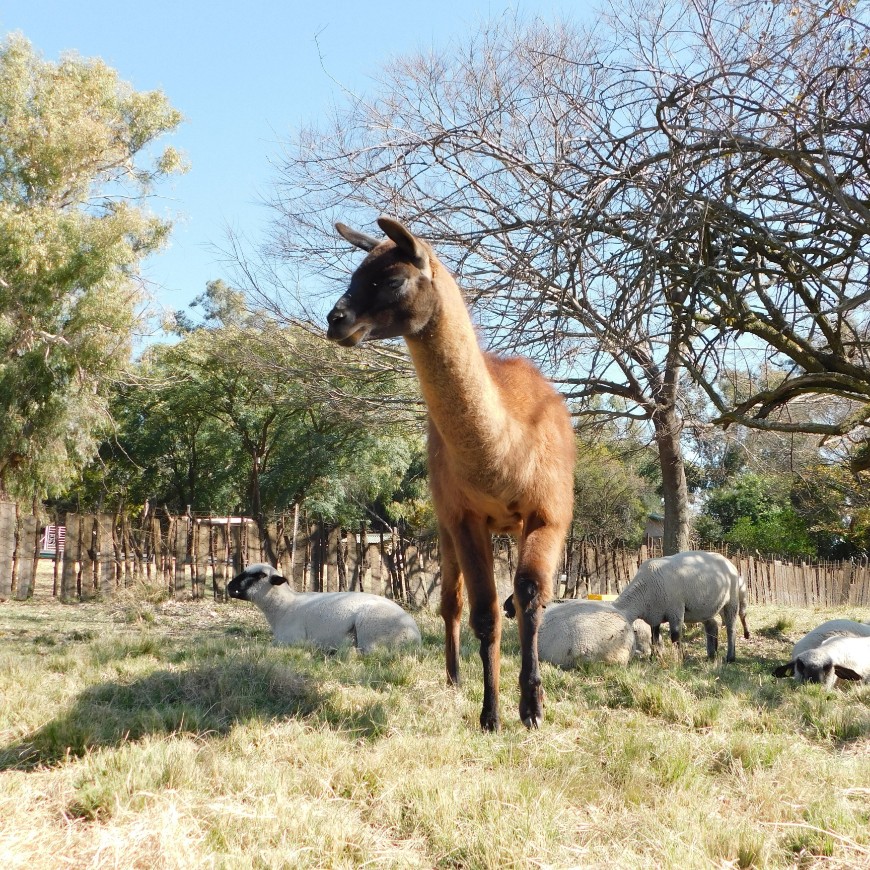
Most livestock guardian animals in Australia are dogs, but llamas, alpacas and donkeys are also used. Photo: Desire Le Roux.
Advantages
- Guardian animals are an alternative or addition to conventional fox control, especially for peri-urban areas and smaller farms where control options like baiting and shooting are limited.
- Alpacas, llamas and donkeys typically require minimal supervision compared to dogs and can be managed in a similar manner to the livestock being protected.
- Guardian dogs are more territorial and so tend to patrol and actively protect an area larger than alpacas, llamas and donkeys.
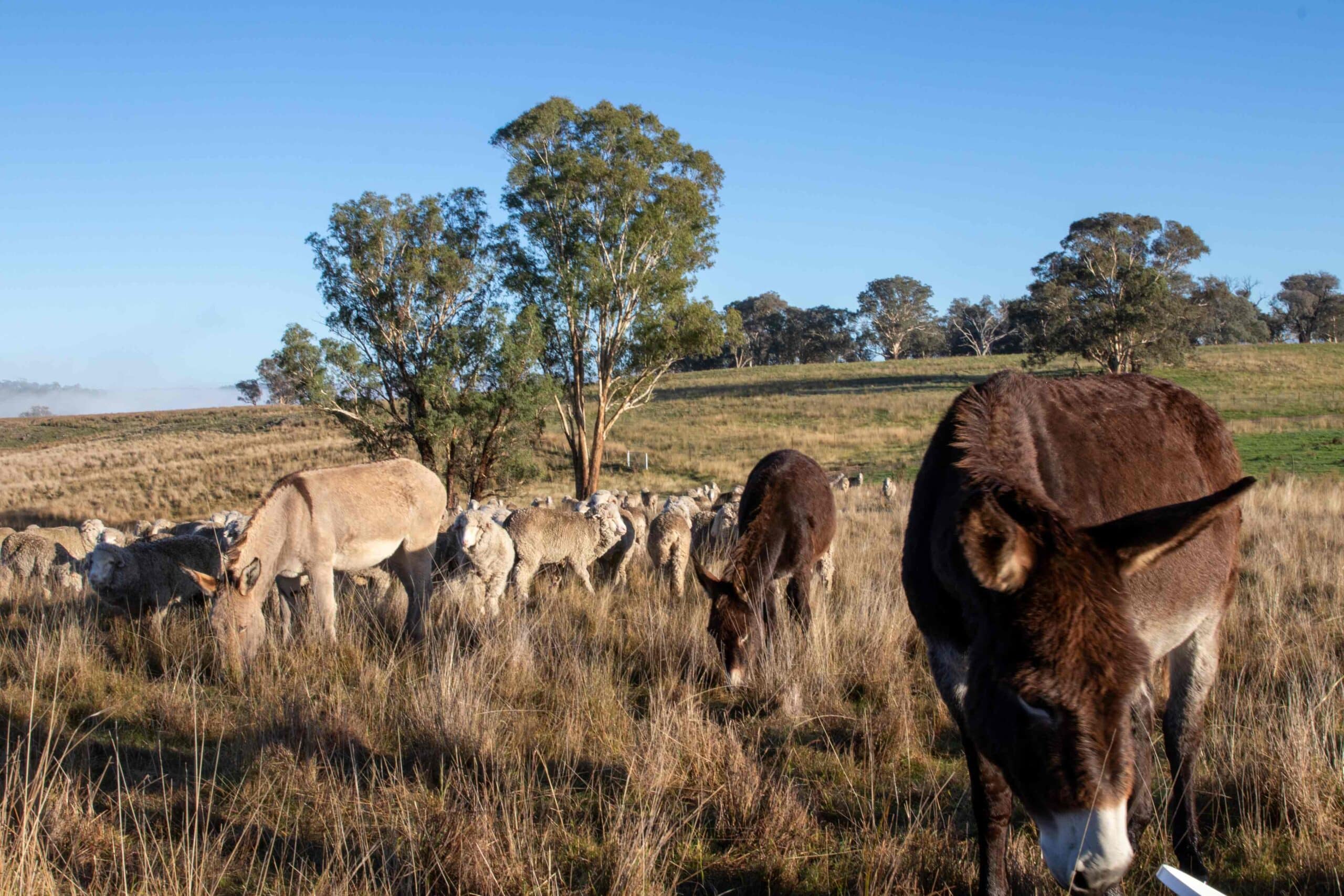
Donkeys are also being used as guardian animals, and often need less supervision than guardian dogs. Photo: Central Tablelands Local Land Services
Things to consider when using guardian animals
- To be effective, guardian animals, especially dogs, require a lot of time for training and supervision to ensure that they do not harass, injure or kill stock and wildlife, or wander onto other properties. They need supervision to ensure they are working effectively.
- Guardian animals require specific circumstances to bond with their charges. For example, alpacas and llamas will not stay with their livestock if other alpacas and llamas are in the area.
- Guardian animals must have adequate feed and water and be regularly monitored to protect them from adverse environmental conditions, disease, injury and distress.
- Regular handling and training of guardian animals allow them to be caught when necessary.
- Guardian animals are only suitable for small-to-medium properties. It is difficult for large properties to benefit from guardian animals.
- Poisons, traps and canid pest ejectors present the highest risks to guardian dogs. If these tools are part of your program, ensure to put measures in place to protect them.
- Guardian animals are most effective when wild dog and fox numbers are kept low by other techniques as there is then less predators to guard against and they themselves are less likely to get attacked.
- Guardian animals, especially dogs, may travel long distances chasing predators.
- Guardian dogs may bark a lot and could be a nuisance to neighbours.
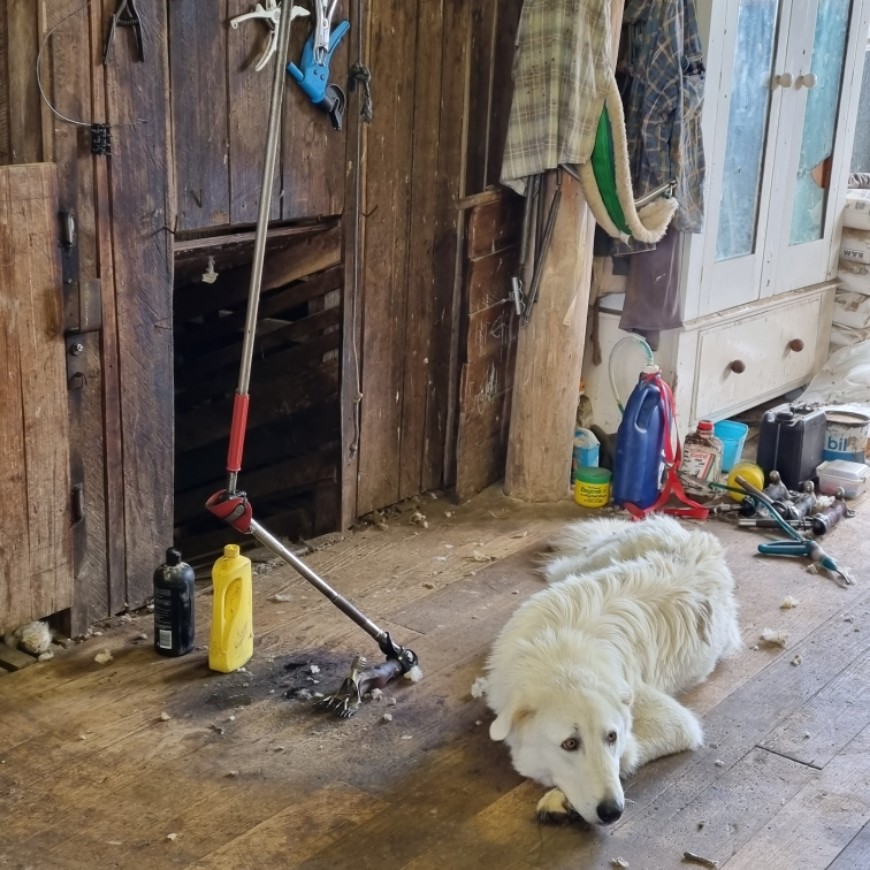
To be effective, guardian dogs need a lot of training, supervision and care. Photo: National Wild Dog Action Plan.
Effective use
Guardian animals are best suited to small-to-medium properties, but a sizable investment of time and effort is required to establish and maintain a program that uses guardian animals. The costs and benefits of a guardian animal program should be considered against other management tools.
Livestock guardian dogs are mainly used to protect against wild dogs and foxes. Donkeys, alpacas and llamas can also be used to guard sheep, goats, and cattle from foxes and other predators.
A primary concern is the guardian animal’s disposition towards the animals it needs to protect. Bonding the guardian animal with their charges is very important. Without this step, the guardian animal is likely to either be ineffective or a detriment to the animals it is supposed to protect.
- Llamas and alpacas can bond to sheep relatively quickly (1–2 weeks) and have a natural drive to attack canid predators.
- Dogs may need to be trained to recognise and deter predators and should be introduced to their charges more slowly from a young age. Guardian dogs are not often effective until 2 years of age.
Using more than one guardian animal can increase the effectiveness of predator control, give guardian animals more company, and allow a larger area or group to be protected. However, placing too many guardian animals together can lead to them forming their own group.
Guardian animals need to be regularly monitored and evaluated to ensure they are doing their job and to identify any issues.
Guardian animals are not failsafe. Foxes are not necessarily excluded from an area due to the presence of a guardian animal, but it may influence the time foxes stay within a guarded area. However, as soon as guardian animals are not present, predators will rapidly move back in, even if the guardian animal is relatively close by.
Guardian animals are a lethal control method – they will kill foxes they encounter.
The best results will be obtained when guardian animals are used as part of an integrated pest management approach that includes other methods such as landscape management; fire regimes; rabbit, cat, fox and dingo control; and grazing management.
More information on the use of guardian animals is available on PestSmart.
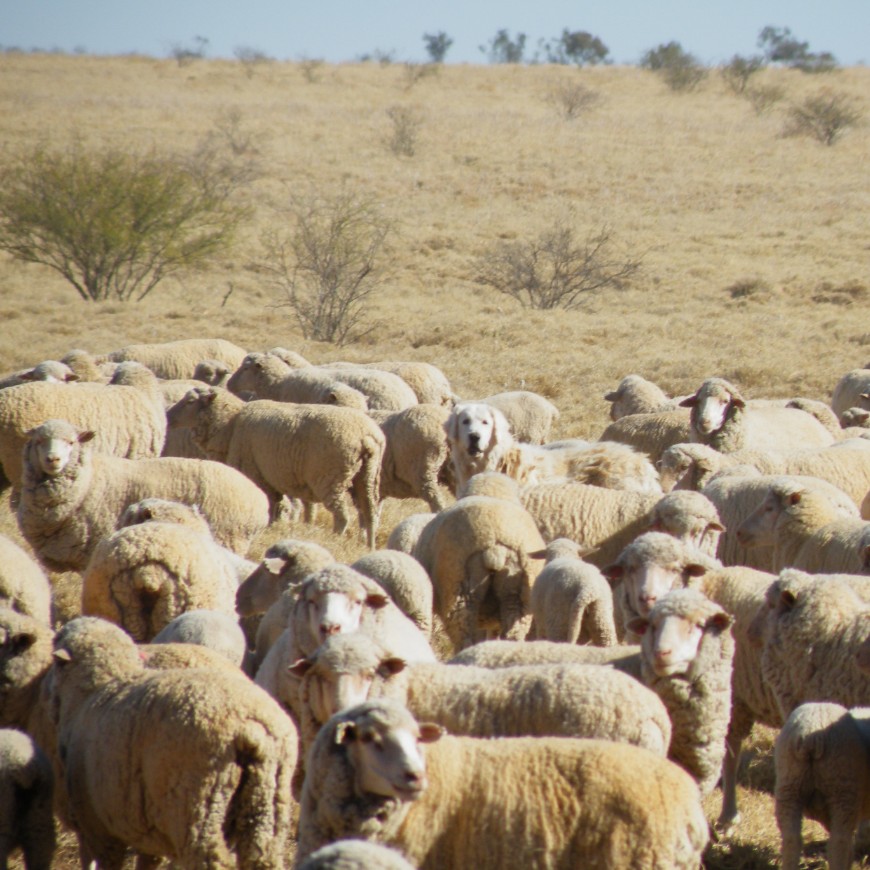
Guardian animals, like this maremma, need to be used in conjunction with other fox management tools to be effective. Photo: National Wild Dog Action Plan.
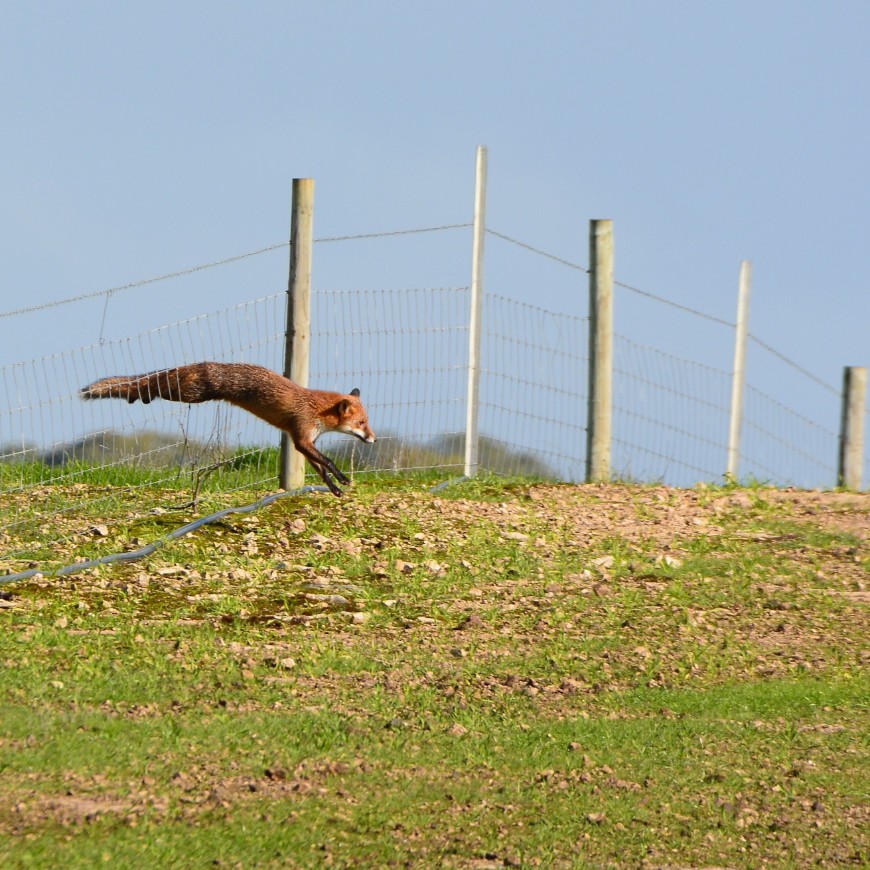
Foxes are not necessarily excluded from areas by guardian animals, especially on medium-to-large properties. But they might change their behaviour. Photo: Dion Thompson.
Laws for guardian animals
Guardian animals can be used for fox control in all states and territories under particular conditions. Check with your state or territory for further information.
Guardian animals cannot be used for hunting.
Guardian dogs are permitted to locate, hold at bay and retrieve feral animals, but must not be intentionally set on animals as part of their training or use.
You must ensure that the guardian animals stay on your property.
Banner photo: National Wild Dog Action Plan.
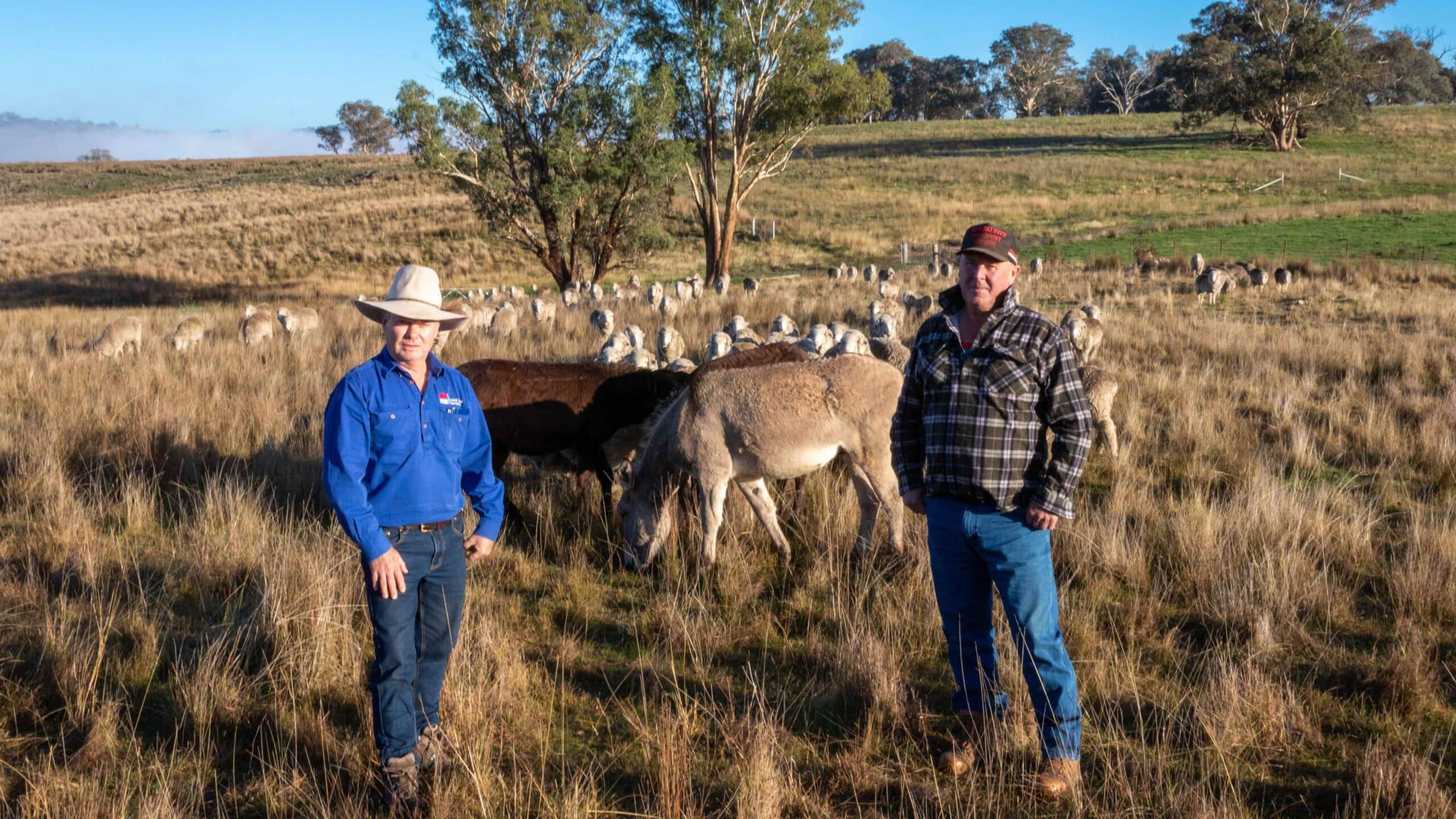
To be effective, guardian animals need time to bond with their charges. This can take time, skill and patience. Photo: Central Tablelands Local Land Services.
